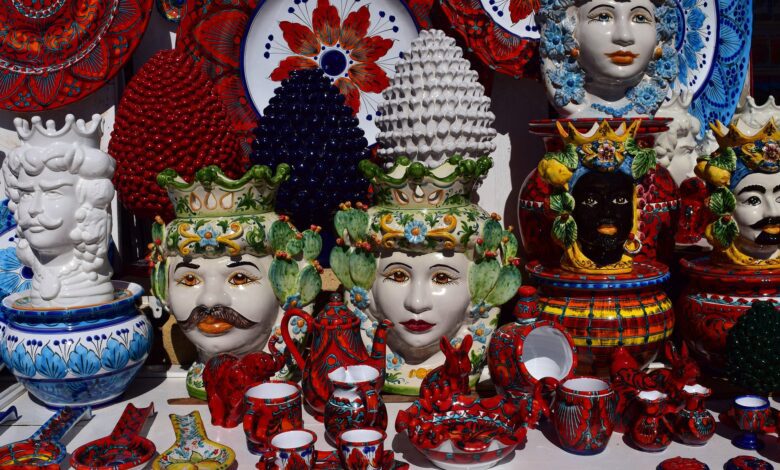
The Sicilian moors’ heads are a unique and fascinating symbol of the history and culture of Sicily. These statues represent the heads of Moorish warriors who were defeated and killed during the Arab domination of the island.
Legend has it that Arab soldiers, to demonstrate their strength and power, would cut off the heads of their defeated enemies and carry them as war trophies. The moors’ heads were then transformed into works of art, decorated with fabrics, precious stones, and other elaborate decorations.
The exact origin of these heads is not entirely clear, but it is believed they originated during the Arab domination period of Sicily, which lasted from 827 to 1091. During this period, the Arabs brought with them their culture, architecture, and traditions, which merged with those of pre-existing Sicily.
There are also two other versions about the origin of the moors’ heads, more picturesque and reinforcing the stubbornness of the Sicilians.
The legend
The legend tells the story of a young girl, whose name is unknown, who lived in the Kalsa district and fell in love with a young Arab named Moro. Unaware that Moro was already married and had a family, the girl reciprocated the young man’s love with great intensity. However, when the truth came to light and the girl discovered that the young man would soon leave the city to return to his family in the East, she was seized by despair and resentment. She then decided to kill Moro at night by cutting off his head.
The girl then decided to use the Arab’s head as a vase in which to cultivate basil, a symbolic plant associated with sacredness. The basil grew lush inside the vase, thanks to the bitter tears shed by the girl for her loss and her careful care.
The beauty of the basil attracted the attention of the district’s inhabitants, who began to request their artisans to make terracotta vases in the shape of the Moor’s head. This led to the creation of a real production of Moors’ Heads, which became famous throughout the city.
There is also a second version of the legend, in which the girl at the center of the story is of noble origin and has a clandestine relationship with a young Arab. The two are discovered and beheaded, and their heads are used as a warning to the other inhabitants of the district. This would explain why both the man’s and woman’s head are often seen around.
The moors’ heads have become a distinctive symbol of Sicilian culture and have been used in many folk events, such as the procession of the Mysteries in Trapani, during Holy Week, or the patronal feasts in honor of local saints.
But the moors’ heads are also a controversial object, as some people believe their origin is linked to violence and slavery. However, for many Sicilians, these statues represent a historical and cultural memory that goes beyond their violent origins.
In any case, the moors’ heads remain a distinctive and evocative element of Sicilian culture, which deserves to be known and appreciated. Their beauty and charm are a call to the history and traditions of an island that has known many cultures and influences and that continues to be a unique and fascinating place to explore.
Image by Ulrike Leone from Pixabay

